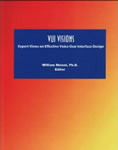4/24/2024· Toxicology
The "Forever" Chemical Perfluorooctanaote (PFOA)
This essay is about the “forever” chemical, per-fluoro-octano-ate, also known as PFOA, and similar chemicals. You have likely read about “forever” chemicals in the news or heard about these chemicals or saw the movie Dark Waters, where excess exposures to these chemicals were alleged to cause a number of














